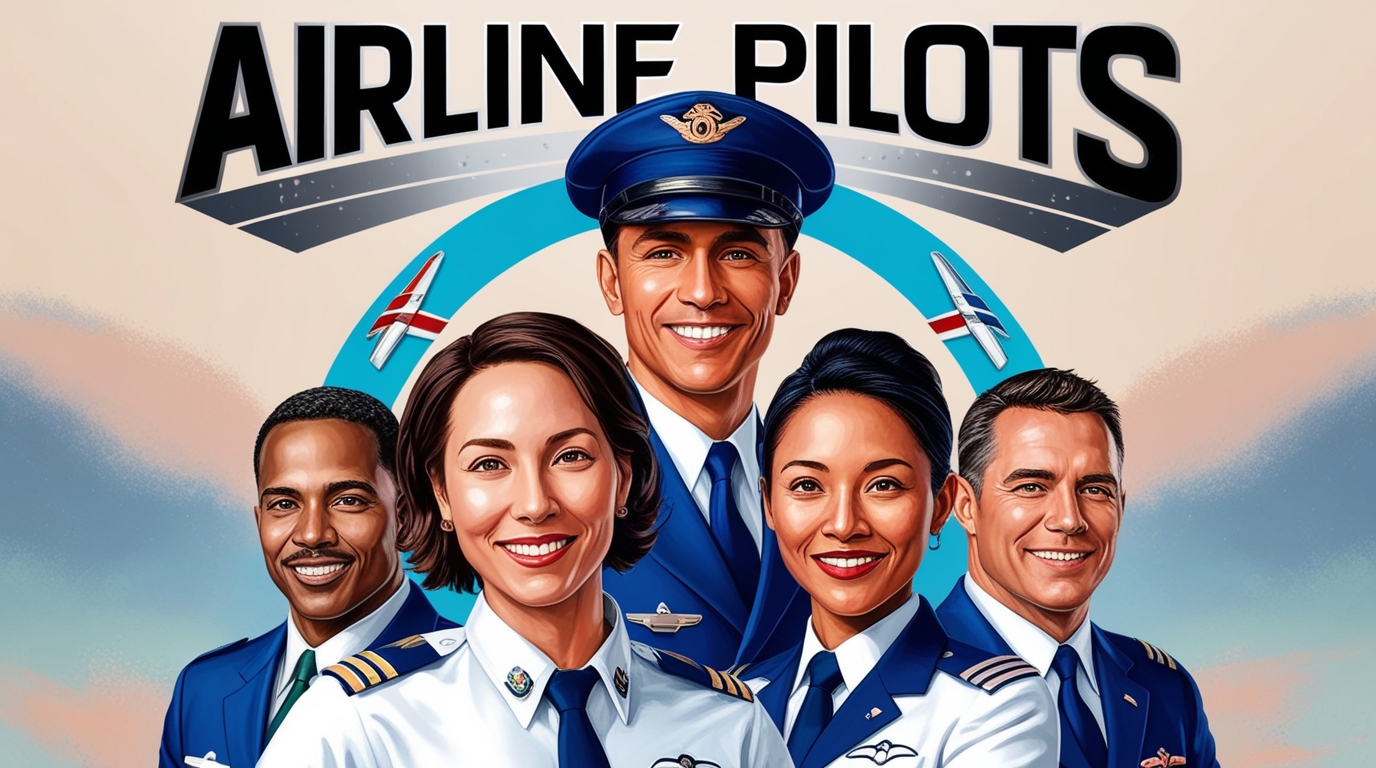
Airline Pilots
Introduction
Airline pilots play a crucial role in the aviation industry, serving as the skilled professionals responsible for safely transporting millions of passengers and cargo around the globe. Their expertise and dedication ensure that flights operate smoothly, connecting people and places in ways that define modern travel. In this post, we will explore the life of airline pilots, the challenges they face, and the unique experiences that shape their careers.
I. The Journey to Becoming an Airline Pilot
A. Education and Training
The path to becoming an airline pilot is both demanding and rewarding. Aspiring pilots typically start with a solid educational foundation. While a college degree is not always mandatory, many airlines prefer candidates with a bachelor’s degree in aviation, aerospace engineering, or related fields.
Flight training is a critical component of a pilot’s education. To begin flying, candidates must obtain a Private Pilot License (PPL), which involves both ground school and in-air instruction. This license allows pilots to fly privately but isn’t sufficient for commercial airline jobs. Following this, they pursue a Commercial Pilot License (CPL), which requires additional flight hours and examinations.
The journey can be challenging. As one young pilot, Sarah, shared, “I remember feeling overwhelmed during my training. Juggling theory and practical flying while managing the costs of flight hours was daunting. But every milestone was worth it when I finally earned my licenses.”
B. Flight Hours and Experience
Accumulating flight hours is essential for airline pilots. To qualify for an Airline Transport Pilot License (ATPL), which is necessary to act as a captain on commercial flights, pilots must log a minimum of 1,500 flight hours. This requirement ensures that pilots have extensive flying experience, enhancing safety and reliability in the skies.

Sarah’s story highlights this journey: “After earning my CPL, I took every opportunity I could find—flying small aircraft, giving sightseeing tours, and even working as a flight instructor. Those hours not only built my skills but also my confidence.”
II. Daily Life of an Airline Pilot
A. A Typical Day in the Cockpit
A day in the life of airline pilots is both structured and dynamic. Before each flight, pilots conduct thorough pre-flight preparations, which include reviewing flight plans, checking weather conditions, and ensuring that the aircraft is in optimal condition.
Once in the cockpit, their responsibilities are multifaceted. During takeoff, pilots must coordinate with air traffic control, monitor instruments, and manage the aircraft’s systems. Once in the air, they shift their focus to navigation and maintaining communication with ground control.
The landing phase is equally critical, requiring precision and concentration. A pilot’s ability to remain calm under pressure is paramount. As one experienced pilot noted, “Each flight is a new challenge. You might encounter unexpected weather or technical issues, but staying focused is key.”
B. Work Schedule and Lifestyle
Airline pilots often work irregular hours, with shifts that can include early mornings, late nights, and weekends. Layovers in different cities can disrupt routines, making it challenging to maintain a work-life balance.
One pilot, James, reflected on this aspect of the job: “I love flying, but being away from home can be tough. My family understands, but it requires constant communication and planning to stay connected.”
Pilots often have to adapt their lifestyles to accommodate their unique schedules, making the moments spent with family even more precious.
III. The Skills and Qualities of Airline Pilots
A. Technical Skills
Airline pilots must possess a variety of technical skills. Navigation, communication, and problem-solving are paramount in ensuring flight safety. Pilots use sophisticated technology and flight management systems to monitor their route and adjust as needed.
For instance, modern cockpit instruments provide real-time data on weather and flight performance, allowing pilots to make informed decisions quickly. “Understanding the technology is vital,” says Emily, a commercial pilot. “It’s not just about flying; it’s about interpreting data and responding to changes.”
B. Soft Skills
While technical skills are essential, soft skills are equally important. Teamwork, leadership, and emotional intelligence help airline pilots work effectively with their crew and respond to in-flight emergencies.
During an intense situation involving unexpected turbulence, one pilot recalled, “Staying calm and reassuring the crew and passengers is crucial. It’s a team effort, and everyone needs to be on the same page.”
Pilots often share stories of working together seamlessly in high-pressure situations, emphasizing the significance of collaboration in aviation.
IV. Challenges Faced by Airline Pilots
A. Mental and Physical Demands
The demands of being an airline pilot extend beyond technical expertise. Mental and physical challenges can arise, particularly due to irregular schedules and the stresses of flying.
Fatigue is a common concern, as pilots must remain alert and focused during flights. Many airlines implement strict regulations to mitigate fatigue, requiring pilots to rest adequately between flights.
One pilot candidly admitted, “There have been times when the fatigue hit hard. I’ve learned to prioritize my well-being, using downtime for rest and self-care. Mental health is just as important as flying skills.”

B. Regulatory and Industry Changes
The aviation industry is continually evolving, and airline pilots must adapt to changing regulations and safety protocols. Recent advancements in technology have also reshaped the landscape of flying.
A seasoned pilot shared their perspective on these changes: “Every few years, new rules come into play. It’s important to stay informed and flexible. The ability to adapt is part of being a successful pilot.”
V. The Future of Airline Pilots
A. Technology and Automation
Automation is revolutionizing aviation, leading to discussions about the future role of airline pilots. While technology enhances safety and efficiency, it also raises questions about the necessity of human pilots in the cockpit.
Many pilots view automation as a tool to assist rather than replace them. “The human element will always be crucial,” says Alex, an airline pilot. “We bring judgment and experience that technology can’t replicate. We’re trained to handle situations that may arise unexpectedly.”
B. Sustainability in Aviation
Environmental concerns are prompting the aviation industry to explore sustainable practices. Airline pilots are increasingly involved in discussions about reducing carbon footprints and promoting eco-friendly technologies.
One pilot expressed their commitment to sustainability: “As a pilot, I care about our planet. Initiatives like more efficient flight paths and sustainable fuel are steps in the right direction. We all have a role to play in protecting our environment.”
VI. Personal Stories from Airline Pilots
A. Inspirational Journeys
The journeys of airline pilots often reflect diverse backgrounds and experiences. From aspiring aviators who overcame financial barriers to those who transitioned from different careers, each story adds to the rich tapestry of aviation.
One pilot recounted how their childhood dream fueled their determination: “I grew up watching planes fly overhead. I promised myself I would fly one day, no matter what obstacles came my way. That passion has driven my entire career.”
B. Memorable Flights
Airline pilots have countless memorable experiences, from extraordinary flights to heartwarming passenger interactions.
One pilot shared a touching story: “On a flight to a wedding destination, I learned that a couple was getting married at their destination. I arranged for the cabin crew to deliver a special message from me, wishing them well. It’s moments like that that remind you why you love this job.”
Conclusion
In conclusion, airline pilots are vital to the aviation industry, embodying passion, dedication, and skill. Their journeys are filled with challenges and triumphs, showcasing a commitment to safety and excellence. For those aspiring to become airline pilots, the path may be demanding, but the rewards of flying and connecting the world are profound.
Call to Action
We invite readers to share their thoughts and experiences related to airline pilots. If you’re interested in pursuing a career in aviation, explore the resources available to guide you on your journey to the skies.



